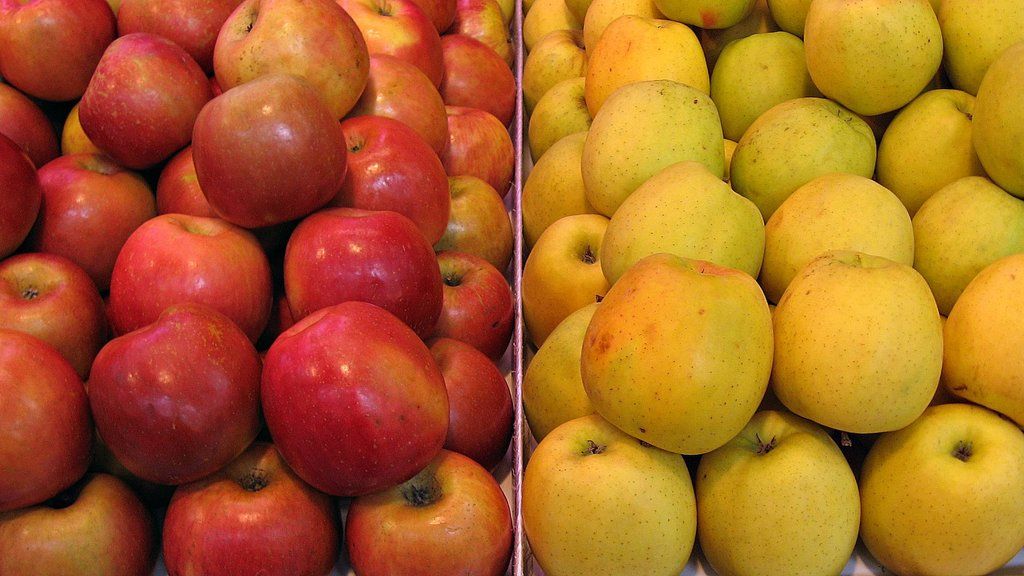Grow these 8 Companion Plants Near Apple Trees for Optimal Garden Harmony:
Planting apple trees in your yard isn't just about soil drainage and light conditions. You should also consider what to grow nearby your apple trees. Companion planting offers unique benefits to apple trees, from low-growing ground covers to aromatic herbs and flowering pollinator magnets. These plants can help repel pests, improve pollination, enrich the soil, prevent weeds, and even boost your harvest. Let's explore some top recommendations from horticulture experts.
Sweet AlyssumThis delicate flowering plant does more than just add a charming touch to your garden.
"It attracts beneficial insects that help reduce pests," says master gardener Mary Jane Duford. "Specifically, its small flowers produce nectar that attracts hoverflies. Hoverfly larvae feed on woolly apple aphids, lessening pest pressure on the fruit trees."
Because of its shallow roots and compact size, sweet alyssum won't compete with apple trees for nutrients. It's fast-growing, helps prevent weeds, and thrives in the same conditions as apples.
- Zones: 3 to 9
- Mature size: 3 to 6 inches tall, up to 12 inches wide
- Care requirements: Full sun; well-drained soil; moderate water
CloverClovers, including white clover and crimson clover, grow well under apple trees.
"These plants pull nitrogen from the air and add it to the soil, which boosts soil fertility and eliminates the need for synthetic fertilizers," Duford says. They also create effective ground covers that help suppress weeds and retain moisture.
Clover flowers even attract pollinators and pest-eating insects, creating a healthier orchard ecosystem.
- Zones: 3 to 10
- Mature size: White clover: under 6 inches; crimson clover: 12-18 inches
- Care requirements: Partial to full sun; rich, well-drained soil
ParsleyThis culinary staple benefits your garden as well.
"Parsley's flowers-that typically appear in year two-can attract predatory insects, which help control pests," says Duford. Codling moths, among the most common apple tree pests, can be deterred by planting parsley around the base of your tree.
- Zones: 3 to 11
- Mature size: 12t o 18 inches tall
- Care requirements: Full sun; moist, well-drained soil
ChivesChives, garlic, and other alliums contribute to your apple grove's health.
"Apple scab is one of the issues that has been known to diminish if the gardener chooses to plant chives or garlic in close proximity to their trees," says Luke Hammond, expert gardener at Seedtime. Apple scab is a common fungal disease that causes dark spots to appear on leaves and fruit.
These pungent plants may also help keep away deer and rabbits.
- Zones: 3 to 9
- Mature size: 12 to 24 inches tall
- Care requirements: Full sun; well-drained soil; moderate water
YarrowYarrow does more than attract pollinators. It also lures in helpful predators, like ladybugs and lacewings, which keep pests like codling moths in check.
While the plant's deep roots can also loosen soil and bring nutrients to the surface, for best results, Hammond suggests planting yarrow in nearby hedgerows or flower beds, rather than directly under the trees.
- Zones: 3 to 9
- Mature size: 18 to 24 inches tall
- Care requirements: Full sun; drought-tolerant, well-drained soil
FennelIf aphids are a problem in your orchard, try planting fennel nearby. This aromatic herb acts as a trap crop, drawing pests away from your apples. It also attracts lacewings, ladybugs, and other beneficial insects that devour these pests.
As with yarrow, fennel is best planted close to-but not directly under-apple trees to avoid competition and crowding, Hammond says.
- Zones: 4 to 9
- Mature size: 3 to 5 feet tall
- Care requirements: Full sun; well-drained soil; moderate water
MarigoldsMarigolds earn their place in the orchard by attracting beneficial insects and repelling harmful ones. Ladybugs, lacewings, and parasitic wasps love them, while aphids tend to stay away.
"Marigolds are a good choice in creating an aroma cover scent throughout the season," Hammond says. Just note that marigolds bloom later in the season, well after apple blossoms have faded.
- Zones: Annual in all zones
- Mature size: 6 to 24 inches tall
- Care requirements: Full sun; moderate water; well-drained soil
NasturtiumNasturtiums are another classic trap crop, drawing aphids away from your fruit trees. Like marigolds, they also help mask the scent of your trees from pests.
- Zones: Annual in all zones
- Mature size: 12 to 18 inches tall; 1 to 3 feet spread
- Care requirements: Full sun to partial shade; well-drained soil
[1] Incorporating Companion Plants in the Apple Orchard: Improving Health and Yield, Texas A&M AgriLife Extension Service[2] Companion Planting for Biodiversity, National Wildlife Federation[3] Integrated Pest Management for Apples, Iowa State University Extension and Outreach
Sweet Alyssum and Marigolds are not only pretty additions to Martha Stewart's home-and-garden lifestyle, but they also serve a practical purpose in an apple orchard by attracting beneficial insects that help reduce pests.
Clover and Chives not only make attractive ground covers but also boost soil fertility, improve pollination, and deter common apple tree pests such as codling moths.








